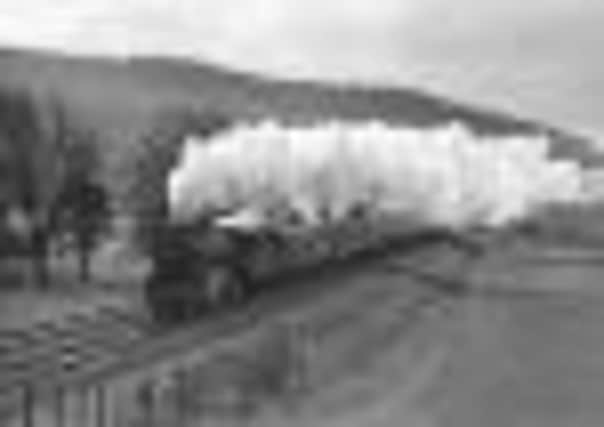David Spaven: On track for the rebirth of Waverley Line from Borders to city


Beeching, below, had been appointed as chairman of the British Railways Board by a Conservative government increasingly alarmed by the mounting financial problems of the rail system, in the face of growing competition from the roads.
Closure of “unremunerative” lines had been gathering pace in the early 1960s and there was an expectation that Beeching would propose many service withdrawals. But the sheer scale of the proposals came as a shock. Passenger services were to be withdrawn from 5000 route miles, and more than 2000 stations would be closed across Britain. In Scotland, all the railways beyond Inverness would disappear; Galloway would lose its passenger trains; and the 98-mile Waverley route from Edinburgh to Carlisle faced the axe.
Advertisement
Hide AdAdvertisement
Hide AdThis was strong stuff – and campaigners in the Highlands lost no time in mounting a vociferous campaign of opposition. Their efforts were rewarded when in 1964 transport minister Ernest Marples refused consent to closure of all 230 miles of railway north and west of Inverness. This was by far the biggest railway reprieve of the Beeching era, and most of the rest of Scotland had much less luck.
Despite widespread opposition, and a belated grassroots campaign against closure, the Waverley route succumbed in 1969.
The debate about Beeching still rages in railway circles. On the positive side, his central argument that the railways should concentrate on what they did best led to two very positive freight developments which have been serving the industry (and the country) very well since the mid 1960s.
The first “merry-go-round” trains – loading and unloading coal without the trains stopping – began linking Monktonhall Colliery and Cockenzie Power Station in 1966 and have provided efficient and environmentally-friendly transport for Britain’s power generation industry ever since.
Beeching promoted the concept of high-capacity “liner” trains of containers and today Freightliner – whose Scottish railhead is in Coatbridge – remains the market leader for the overland movement of containers to Britain’s major deep sea ports.
However, Beeching had his blind spots. He failed to understand the scope for economies on many of the routes which he had proposed for closure. In the case of the Waverley route, this was still operating as a double-track railway with many wayside stations generating just a handful of passengers a day. After closure was confirmed, British Rail and the Ministry of Transport claimed that even a “basic railway” from Hawick to Edinburgh, with single-track operation and unstaffed stations, would require a subsidy of £220,000 a year – which Labour transport minister Richard Marsh said could not be justified.
However, as part of the research for my book Waverley Route: The Life, Death and Rebirth of the Borders Railway, I re-examined the figures and concluded that a subsidy of half this level would have been required.
The Edinburgh-Hawick railway was sacrificed on the basis of dubious cost and revenue projections, leaving the Borders as the only region of Britain without a train service.
Advertisement
Hide AdAdvertisement
Hide AdFortunately, we can now look forward to the Borders and Midlothian re-appearing on the railway map in 2015. The new Borders Railway from Tweedbank to Edinburgh will be the longest rail route re-opening in modern British history – and instead of an 83-minute bus journey from Galashiels to Edinburgh, the train will take just 50 minutes.
A bus-rail interchange at Galashiels, and park-and-ride facilities at Tweedbank, will ensure that the benefits of the new railway will be spread across the Borders – and four stations in Midlothian will offer an attractive alternative to heavily-congested roads into Edinburgh. Dr Beeching may well be turning in his grave.
• David Spaven is a rail consultant and author
THE ERA OF AXEMAN BEECHING
DR Richard Beeching, chairman of British Railways, published his report, The Reshaping of British Railways, on March 27, 1963.
British Rail was losing
£140 million a year when he was hired to “make the railways pay”.
In his investigation into the rail network, he found that only half of the 7000 stations carried 98 per cent of the traffic.
A quarter of all traffic started at just 34 stations, while a third of the track was used by just 1 per cent of traffic. He recommended
that 6000 miles of mostly rural and industrial lines be closed entirely, and that
some of the remaining lines should be kept open only for freight.
Advertisement
Hide AdAdvertisement
Hide AdThe report said that 2363 stations were to close, including 435 already under threat.
Included in 650 miles of railway cuts was the 98-mile Waverley line between Edinburgh and Carlisle.
From the mid-1960s, the full force of Beeching’s Axe was felt as 67,700 jobs were lost.